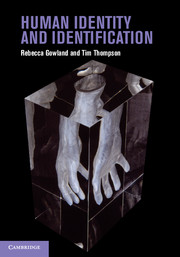5 - The skeleton
Published online by Cambridge University Press: 05 February 2013
Summary
The bony frame of the human body provides structure, support and protection for the soft tissues and the fulcra to facilitate movement. Bone is a living tissue, and as such is supplied with oxygen and nutrients necessary for its effective functioning. As well as structural support, bones and the marrow within are responsible for providing the body with red and white blood cells, and also serve as an energy and mineral store. The skeleton, once fully grown, has long been erroneously conceptualised as a rigid, fixed and unchanging structure. In actuality, the skeleton is a dynamic plastic tissue, able to grow and respond to the physiological requirements of the individual and external stimuli throughout the life course (Agarwal & Beauchesne, 2011). The human skeleton has long been of interest to researchers working in anatomy, medicine, anthropology and archaeology. In terms of human identification, the skeleton is responsible for essential biometrics, including our height and facial architecture. Today, radiographs of the hands and teeth are commonly used to estimate a minimum age for living individuals in cases requiring the establishment of criminal liability (e.g. Schmeling et al., 2000), and dental records are used for positive identification in a range of scenarios. The vast majority of human identification work on the skeleton relates to deceased individuals, usually those whose bodies have partially or completely decomposed. Within bioarchaeology, the skeleton has long been the primary unit of analysis, as soft tissues survive only very rarely over long time periods. The importance of the skeleton as a repository for social information, however, has been a particular focus of recent archaeological research. Within the discipline of archaeology, funerary evidence provides a rich arena for the interpretation of both the biological and the cultural remnants of past populations. In this context, skeletal evidence for health, diet and mobility can be examined in conjunction with cultural variables (e.g. grave goods) from the funerary context in order to make inferences concerning aspects of social identity (e.g. gender, age, ethnicity).
- Type
- Chapter
- Information
- Human Identity and Identification , pp. 102 - 131Publisher: Cambridge University PressPrint publication year: 2013



